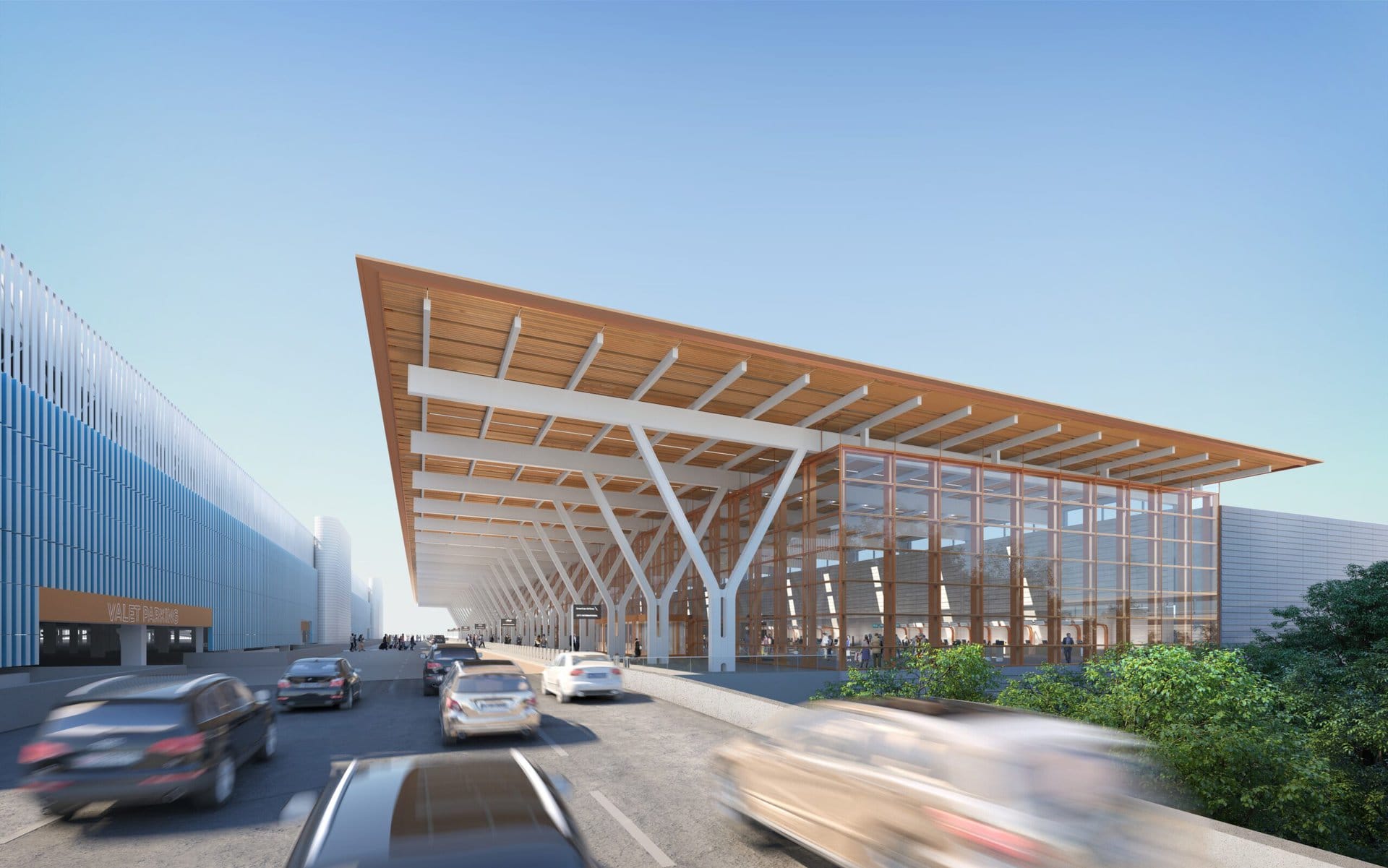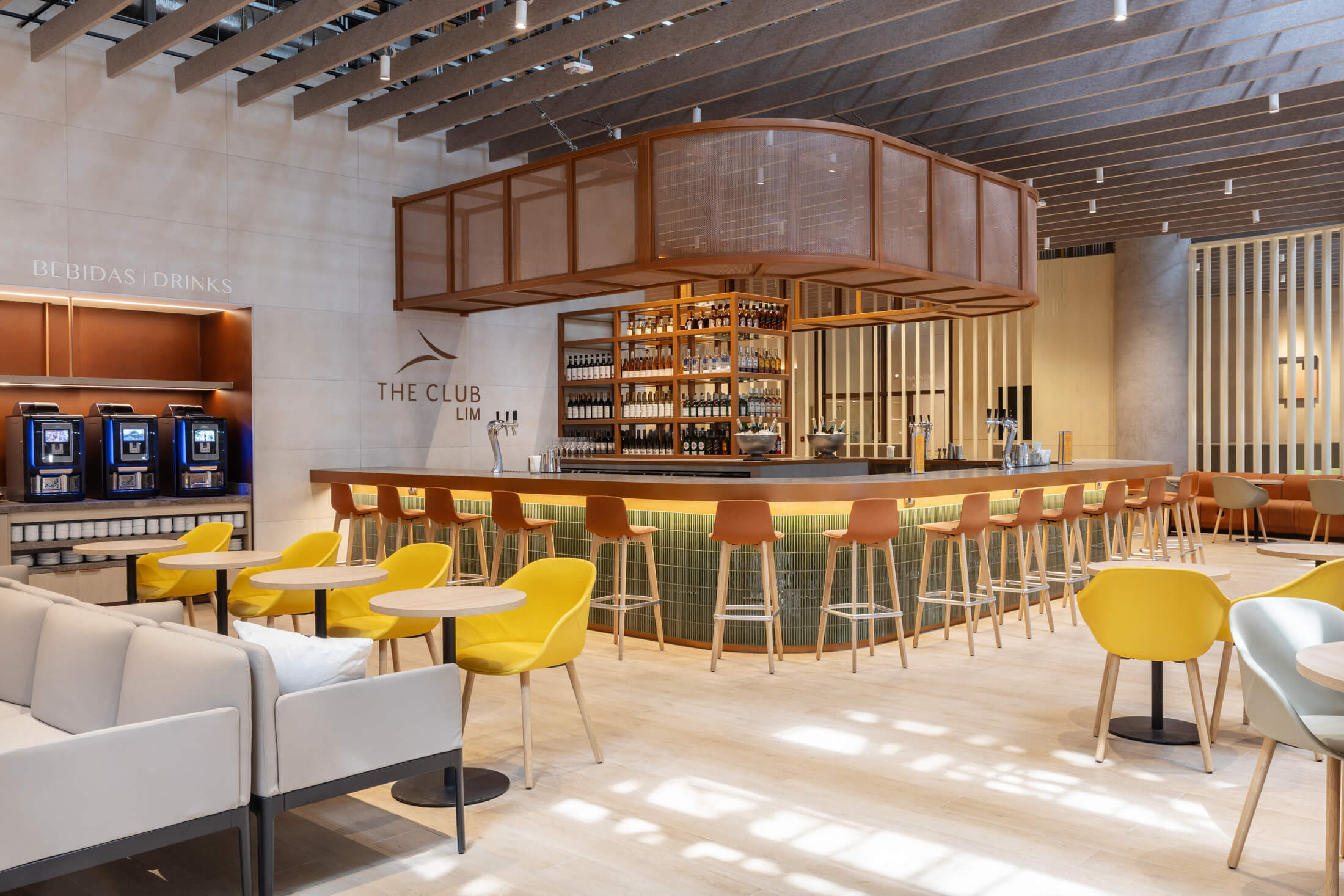New Kansas City Airport Terminal Has Dementia-Friendly Features
The airport's new $1.5 billion terminal features signage, information desks, and a quiet room all designed to be navigable by people with dementia
by Lauren Smith
April 4, 2023

Photo: Courtesy of Kansas City International Airport
Clear signage, information desks, adult changing tables, and a sensitively designed quiet room will help travelers living with dementia and their caregivers navigate the new terminal at Kansas City International Airport (MCI).
The $1.5 billion terminal, which opened at the end of February, is a ground-up reimagining of air travel: both high-tech and inclusive. While many travelers will be awed by the transparent jet bridges, permanent art collection, and local barbecue restaurants, others will be reassured and helped along their journey by more subtle touches: information and check-in counters set to ADA-compliant heights, service animal relief areas, accessible children’s play areas, and visual paging boards to alert deaf customers of flight changes.
The Kansas City Aviation Department was eager to make the new airport as accessible and inclusive as possible and worked alongside local disability advocacy organizations such as The Whole Person and Variety KC.
Designers had not initially accounted for travelers living with Alzheimer’s disease and other forms of dementia, and their caregivers. But they quickly acted to accommodate their needs as well.
“Even though the airport designers were trying to be inclusionary, dementia wasn’t necessarily on their list,” said Deborah Shouse, co-founder of the advocacy group Dementia Friendly Kansas City. “But they welcomed us and listened carefully as we described the needs of travelers living with dementia and their care partners.”
“We considered ADA regulations to be just the starting point,” said Justin Meyer, director of aviation at the Kansas City Aviation Department during a media tour of the new terminal.
As they had when helping to design other public spaces, Dementia Friendly Kansas City worked alongside Michelle Niedens, director of The Cognitive Care Network at the University of Kansas Alzheimer’s Disease Research Center (KU ADRC), to steer the terminal’s architects and designers toward dementia-friendly accommodations.
“It can be tricky to travel, and what we really wanted to do is to extend the travel window for those in middle-stage [of dementia] to stay connected, to visit their families, so supporting caregiving was also key,” Niedens said.
Dementia Friendly Kansas City also consulted with the Dementia-Friendly Airports Working Group and a dementia-friendly travel group from the United Kingdom to learn about accessibility features at airports around the world.
Among the first spaces reconceived were the airport’s restrooms, where some family facilities are equipped with adult-sized changing tables. “That was something our care partners really wanted, so they have a full-size table that comes down from the wall,” Shouse said.
In the communal restrooms, stalls are larger and have floor-to-ceiling partitions for privacy. Red and green lights on the outside indicate whether each stall is occupied or available.
The airport also has a quiet room for people with dementia, neurodivergent travelers, and others easily overstimulated by the bustle and bright lights. The sensory room is decorated in calming and earthy green and brown colors, and the dull finish on the floor, a marked contrast from the high-gloss tiles throughout the wider airport, is intended to accommodate the visual-spatial changes that accompany dementia.
Niedens and Dementia Friendly Kansas City also suggested the airport offer a simulation center so people with dementia, their caregivers, and others, including those with anxiety and autism, could take a dry run through the travel experience, from check-in to deplaning. The simulation is enhanced with a section of a real Airbus 321 fuselage.
“The simulator is almost more about the care partner’s anxiety than the person with the disease,” Niedens said. “It’s about managing that anxiety: ‘Can I manage this? Can I get this person in and out of the bathroom on a flight?’ The best way to handle that stress is to practice first.”
Other accessibility features include clear signs and multiple information desks scattered throughout the airport, not just in a central location at the entrance.
With the new features, the Kansas City airport is now one of the most dementia-friendly airports in the country, Niedens said.
The project also “allowed the KU ADRC to advance our philosophy that ‘it’s not about can’t.’ We work around barriers that allow people to continue to have positive experiences and a great quality of life,” she said.
“We sought to make sure this new airport terminal met all travelers where they are and was designed with the highest levels of accessibility and inclusivity in mind,” Meyer added.




